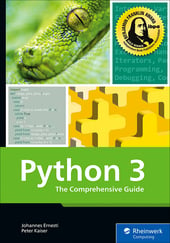In the modern digital age, data is a valuable asset: Information from websites can be pivotal for businesses, researchers, and developers.
Web scraping is the technique used to extract large amounts of data from websites efficiently. Python, with its rich ecosystem of libraries and frameworks, has become the go-to language for web scraping tasks. This blog post provides an introduction to web scraping with Python.
What is Web Scraping?
Let’s get the basic concept of web scraping defined first. Web scraping is the automated process of extracting information from websites. Unlike traditional data collection methods, web scraping leverages software to access, download, and parse data from web pages, allowing for large-scale data extraction. Common applications of web scraping include price monitoring, market research, content aggregation, and data mining.
Before diving into more technical aspects, it's crucial to understand the legal and ethical boundaries of web scraping. Not all websites allow scraping, and violating a website's terms of service can lead to legal consequences. Here are some guidelines to follow:
- Respect the robots.txt file: Websites often have a robots.txt file specifying which parts of the site can be crawled or scraped.
- Avoid overloading servers: Excessive requests can crash servers. Implement delays between requests to avoid this.
- Use the data responsibly: Ensure the data collected is used ethically and in accordance with legal guidelines.
Web Scraping with Python
Let’s discuss using Python for web scraping now.
Setting Up Your Environment
To get started with web scraping in Python, you'll need to set up a few tools. The key libraries to use are requests for making HTTP requests, BeautifulSoup for parsing HTML, and pandas for data manipulation.
Making HTTP Requests
The first step in web scraping is to retrieve the web page's content. The requests library makes it easy to send HTTP requests. This code fetches the HTML content of the specified URL. The response.text you receive contains the HTML as a string, which can then be parsed.
Parsing HTML with BeautifulSoup
Once you have the HTML content, the next step is to parse it and extract the necessary data. BeautifulSoup is a powerful library that simplifies this process. By using this script, BeautifulSoup parses the HTML and extracts the text of the <title> tag. BeautifulSoup provides several methods for navigating and searching the HTML tree, such as find(), find_all(), and select().
Extracting Data from a Table
Let's consider a practical example where we extract data from an HTML table. Assume you have a table of products with their prices:
<table>
<tr>
<th>Product</th>
<th>Price</th>
</tr>
<tr>
<td>Product 1</td>
<td>$10</td>
</tr>
<tr>
<td>Product 2</td>
<td>$20</td>
</tr>
</table>
You can scrape this table and convert it into a Pandas DataFrame:
data = []
table = soup.find('table')
rows = table.find_all('tr')
for row in rows[1:]: # Skip the header row
cols = row.find_all('td')
product = cols[0].get_text()
price = cols[1].get_text()
data.append([product, price])
import pandas as pd
df = pd.DataFrame(data, columns=['Product', 'Price'])
print(df)
This code iterates through the rows of the table, extracts the product names and prices, and stores them in a Pandas DataFrame for easy manipulation.
Handling Pagination
Many websites use pagination to display large datasets across multiple pages. To scrape all data, you need to handle pagination by programmatically navigating through each page. The script you use keeps fetching pages until no more data is found, ensuring that all paginated content is scraped.
Advanced Web Scraping Techniques
In addition to what we’ve already discussed, there are a number of advanced web scraping techniques; let’s discuss them.
Handling JavaScript-Rendered Content
Some websites use JavaScript to render content dynamically, which means the data you need might not be present in the initial HTML. In such cases, tools like Selenium can be used to interact with the web page as a browser would.
Selenium automates a web browser, allowing you to interact with JavaScript-rendered content and extract it after it has loaded.
Using APIs
Many websites provide APIs that allow for easier and more efficient data retrieval compared to scraping HTML. Always check if an API is available before opting for web scraping. APIs often have documentation detailing how to access data programmatically. This approach is typically faster and more reliable, as APIs are designed for data access.
Best Practices for Web Scraping
Below we’ll list a number of best practices to remember and use when using Python for web scraping.
First, respect rate limits. It’s important to avoid making too many requests in a short period to prevent getting banned. You should also introduce random delays between requests to mimic human behavior. These two practices work hand in hand.
Next, learn how to handle errors gracefully. Implement error handling to manage issues like network errors or changes in website structure.
Finally, store data efficiently. Save your scraped data in a structured format like CSV, JSON, or a database.
Conclusion
Web scraping with Python is a powerful skill that opens up a world of possibilities for data collection and analysis. With the requests and BeautifulSoup libraries, you can start scraping basic web pages in no time. For more complex tasks, tools like Selenium and APIs provide additional capabilities. Remember to always scrape responsibly, respecting the legal and ethical guidelines to avoid potential issues. By following best practices and leveraging Python's robust ecosystem, you can efficiently extract and utilize web data for your projects.




Comments